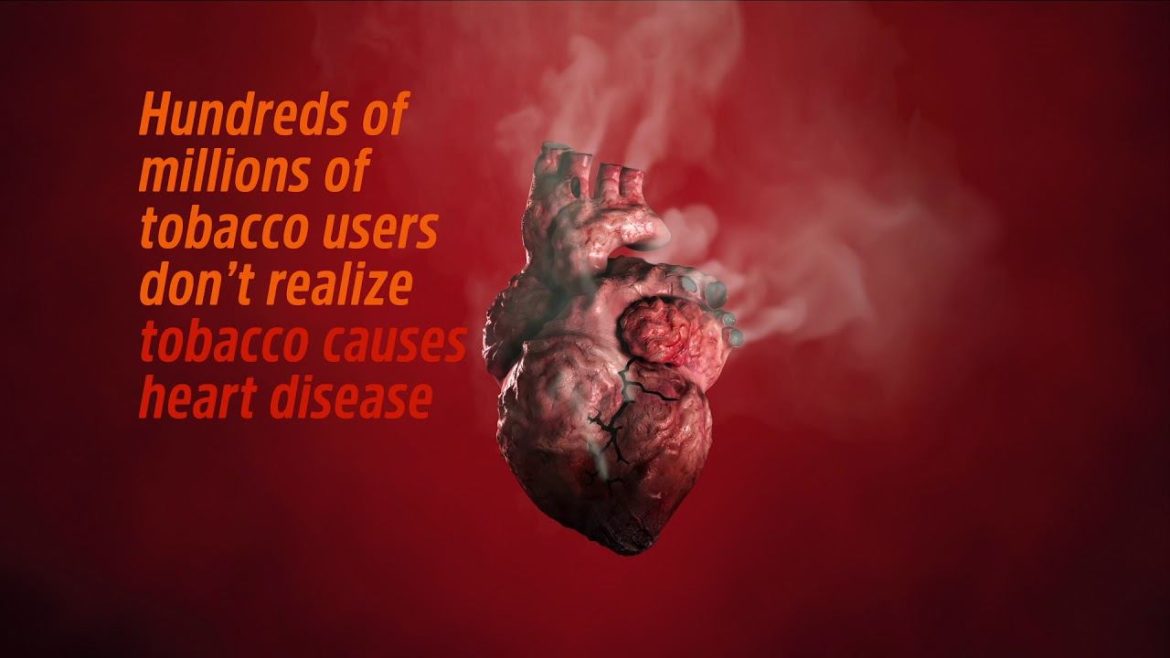Smoking remains one of the most significant preventable causes of coronary heart disease (CHD), a condition that affects millions worldwide and contributes substantially to cardiovascular mortality rates. Understanding the mechanisms through which smoking exerts its detrimental effects on the cardiovascular system is crucial for public health efforts aimed at reducing the burden of heart disease. This article explores in detail the relationship between smoking and coronary heart disease, covering epidemiological evidence, physiological mechanisms, and implications for prevention and cessation strategies.
Epidemiological Evidence
Epidemiological studies consistently demonstrate a strong association between smoking and coronary heart disease.
Smokers have a significantly higher risk of developing CHD compared to nonsmokers, with this risk increasing proportionally to the number of cigarettes smoked per day and the duration of smoking. Research has also shown that exposure to secondhand smoke, or passive smoking, increases the risk of CHD in nonsmokers, further highlighting the pervasive cardiovascular effects of tobacco smoke.
see also: What Is 12-Lead Coronary Artery Scan?
Why Does Smoking Cause Coronary Heart Disease?
1. Atherosclerosis Formation
One of the primary mechanisms linking smoking to CHD is the promotion of atherosclerosis, a condition characterized by the buildup of fatty deposits (plaques) in the arteries. Smoking accelerates the development and progression of atherosclerosis through several interrelated pathways:
Endothelial Dysfunction: Smoking damages the endothelial cells lining the arteries, impairing their ability to regulate vascular tone and inflammation. This dysfunction promotes the adhesion of leukocytes and the accumulation of lipids in the arterial walls, initiating the formation of atherosclerotic plaques.
Inflammatory Response: Tobacco smoke contains numerous toxic chemicals that trigger a chronic inflammatory response within the arterial walls. This inflammatory environment enhances the recruitment of immune cells and promotes the proliferation of smooth muscle cells, contributing to plaque instability and rupture.
Oxidative Stress: Components of cigarette smoke, such as reactive oxygen species and free radicals, induce oxidative stress in vascular tissues. Oxidative damage not only exacerbates endothelial dysfunction but also promotes lipid oxidation and the formation of oxidized low-density lipoproteins (LDL), which are particularly atherogenic.
2. Thrombosis and Vasoconstriction
Beyond atherosclerosis, smoking increases the risk of acute coronary events through mechanisms involving thrombosis and vasoconstriction:
Platelet Activation: Smoking enhances platelet aggregation and activation, increasing the likelihood of thrombus formation on disrupted atherosclerotic plaques. This pro-thrombotic state heightens the risk of myocardial infarction (heart attack) and other acute coronary syndromes.
Vasoconstriction: Nicotine, the addictive component of tobacco, stimulates the release of catecholamines and activates sympathetic nervous system pathways. These effects lead to vasoconstriction, reducing coronary blood flow and oxygen delivery to the myocardium. Chronic exposure to nicotine contributes to the development of coronary microvascular dysfunction, further compromising cardiovascular health.
3. Impact on Risk Factors
Smoking interacts synergistically with other cardiovascular risk factors, exacerbating their adverse effects on heart health:
Hypertension: Smoking increases blood pressure and arterial stiffness, exacerbating hypertension and its cardiovascular consequences.
Dyslipidemia: Smoking lowers high-density lipoprotein (HDL) cholesterol levels and increases LDL cholesterol oxidation, promoting a more atherogenic lipid profile.
Diabetes: Smokers with diabetes face an elevated risk of cardiovascular complications due to the combined effects of smoking and impaired glucose metabolism on vascular function and insulin resistance.
4. Public Health Implications
Addressing the impact of smoking on coronary heart disease requires a comprehensive public health approach:
Tobacco Control Policies: Effective policies include tobacco taxation, smoking bans in public spaces, and comprehensive advertising restrictions to reduce smoking prevalence and protect nonsmokers from secondhand smoke exposure.
Smoking Cessation Programs: Providing accessible and evidence-based smoking cessation interventions is critical for helping smokers quit and reducing their risk of CHD over time. Behavioral counseling, pharmacotherapy, and support services should be integrated into healthcare systems and community settings.
Health Education: Raising awareness about the cardiovascular consequences of smoking through targeted health education campaigns can empower individuals to make informed decisions about tobacco use and cessation.
Conclusion
In conclusion, smoking significantly increases the risk of coronary heart diseasethrough multifaceted mechanisms involving atherosclerosis, thrombosis, vasoconstriction, and exacerbation of cardiovascular risk factors. Public health efforts to reduce smoking prevalence and support smoking cessation are essential for mitigating the impact of tobacco use on cardiovascular health.


